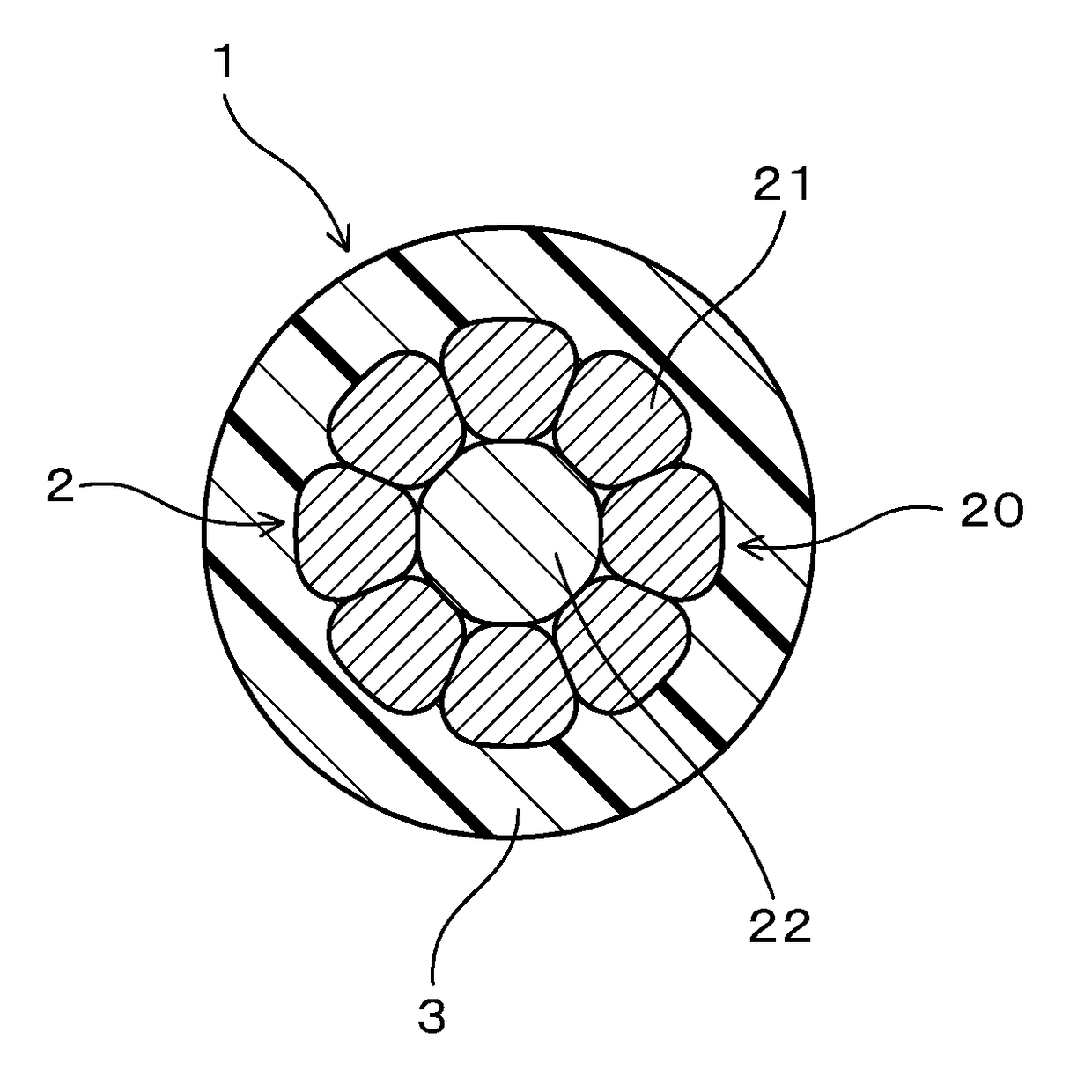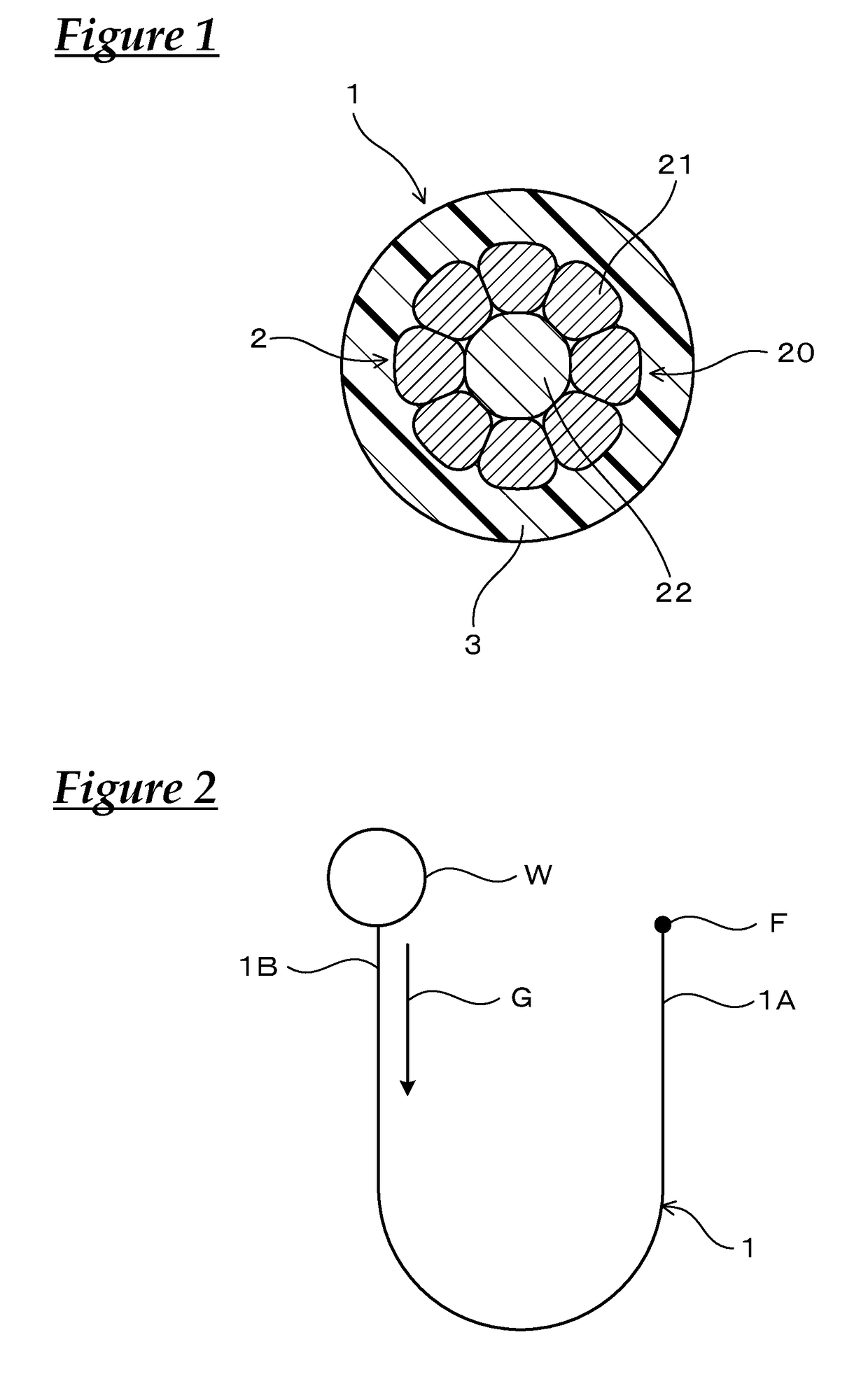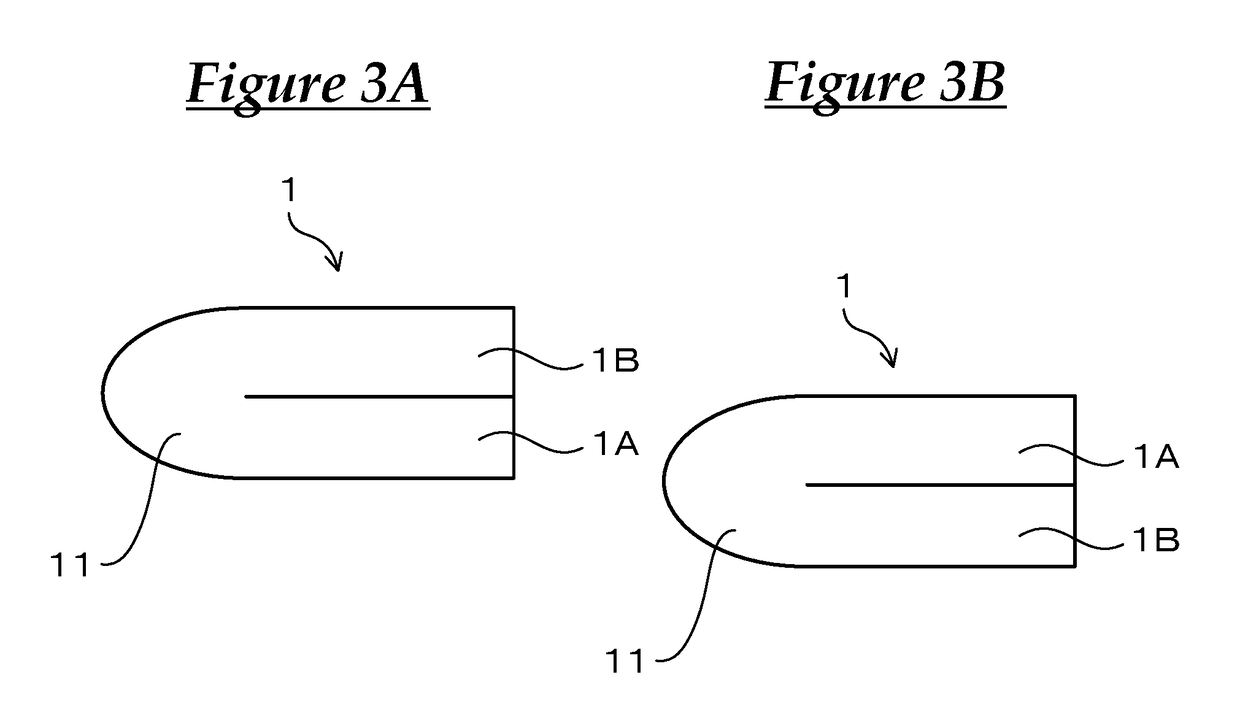Insulated wire
a technology of insulated wire and sn plate, which is applied in the direction of insulated conductors, cables, conductors, etc., can solve the problems of easy peeling, and low melting point of conventional technology, so as to reduce the deterioration of shock resistance and good abrasion resistance
- Summary
- Abstract
- Description
- Claims
- Application Information
AI Technical Summary
Benefits of technology
Problems solved by technology
Method used
Image
Examples
example 1
[0046]An insulated wire in Example 1 will be described with use of FIG. 1. As shown in FIG. 1, an insulated wire 1 in the example includes a stranded wire conductor 2 and an insulator 3 that covers the outer circumference of the stranded wire conductor 2. In the following, this will be described in detail.
[0047]The insulated wire 1 is configured to be used in a state of being in contact with an oil composed of AT fluid or CVT fluid. The stranded wire conductor 2 is made up of at least a plurality of copper-based element wires 21 that are twisted together, and has been heat-treated after circular compression. The copper-based element wires 21 have a Ni-based plated layer (not illustrated) on the surface, and the Ni-based plated layer has been compressed by the circular compression. The insulator 3 is composed of a cross-linked ethylene-tetrafluoroethylene based copolymer.
[0048]In the example, the base material of the copper-based element wires 21 is composed of copper or a copper all...
experimental example
[0060]As the material of the insulator, the following resins were prepared.[0061]ETFE (ethylene-tetrafluoroethylene copolymer) (“Fluon (Registered Trademark) ETFE C-55AP” manufactured by Asahi Glass Co., Ltd.)[0062]PTFE (tetrafluoroethylene resin) (“Fluon (Registered Trademark) PTFE CD097E” manufactured by Asahi Glass Co., Ltd.)[0063]PFA (tetrafluoroethylene-perfluoroalkyl vinyl ether copolymer) (“NEOFLON (Registered Trademark) PFA AP230” manufactured by Daikin Industries, Ltd.)[0064]FEP (tetrafluoroethylene-tetrafluoropropylene copolymer) (“NEOFLON (Registered Trademark) FEP AP230” manufactured by Daikin Industries, Ltd.)[0065]PP (polypropylene) (“NOVATEC PP EA9” manufactured by Japan Polypropylene Corporation)
[0066]As shown in Table 1, eight copper-based element wires each of which had a predetermined outer diameter and each of which had a Ni-base plated layer formed of a Ni plate on the surface were twisted together on the outer circumference of a stainless wire as a tension memb...
PUM
| Property | Measurement | Unit |
|---|---|---|
| thickness | aaaaa | aaaaa |
| thickness | aaaaa | aaaaa |
| thickness | aaaaa | aaaaa |
Abstract
Description
Claims
Application Information
 Login to View More
Login to View More - R&D
- Intellectual Property
- Life Sciences
- Materials
- Tech Scout
- Unparalleled Data Quality
- Higher Quality Content
- 60% Fewer Hallucinations
Browse by: Latest US Patents, China's latest patents, Technical Efficacy Thesaurus, Application Domain, Technology Topic, Popular Technical Reports.
© 2025 PatSnap. All rights reserved.Legal|Privacy policy|Modern Slavery Act Transparency Statement|Sitemap|About US| Contact US: help@patsnap.com



